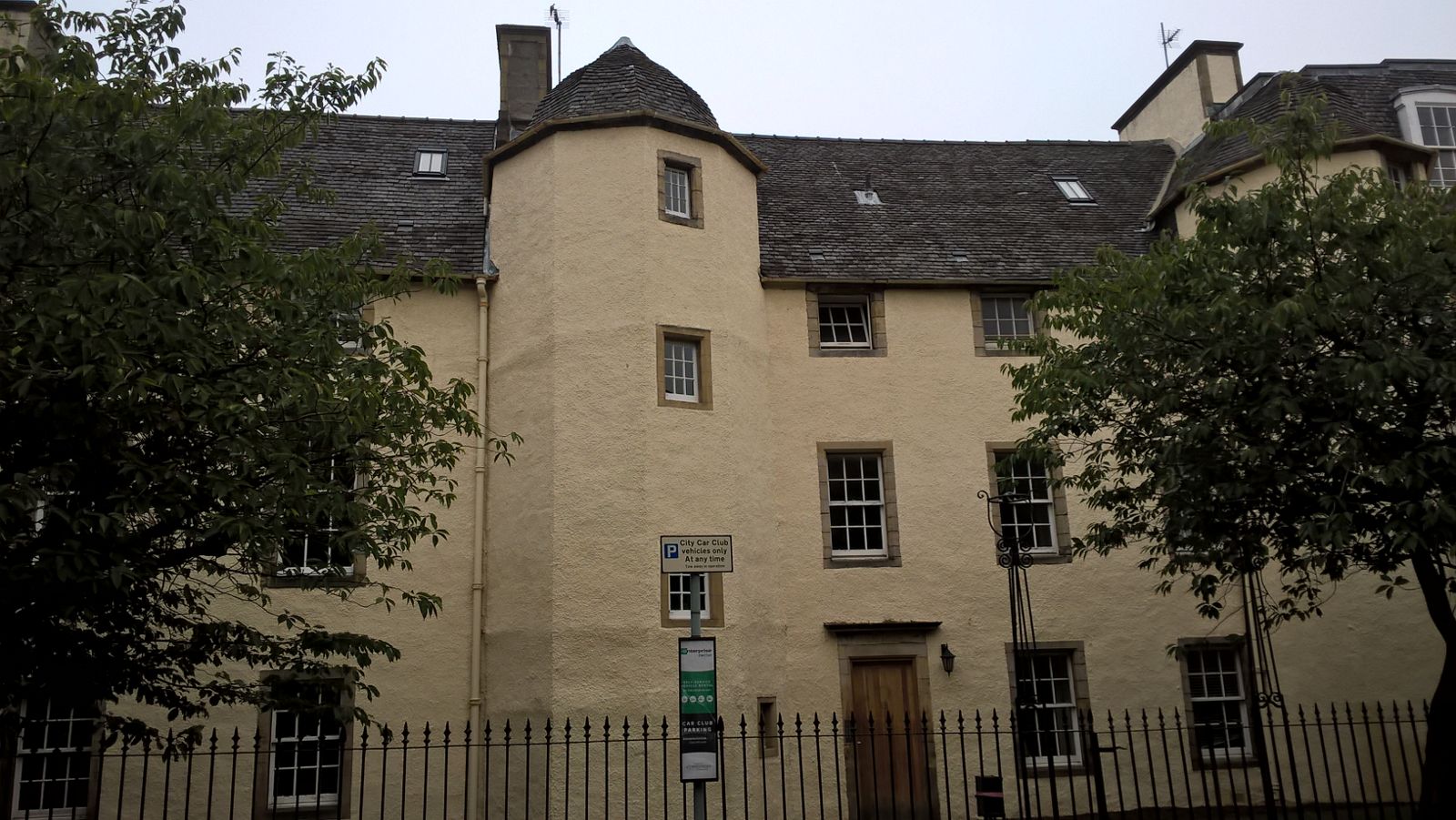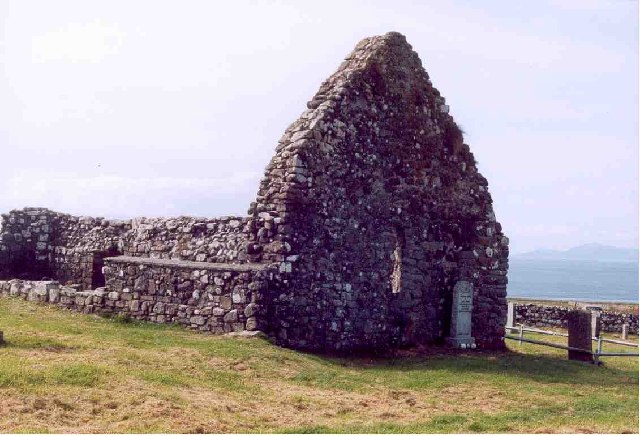|
Waternish
Waternish or Vaternish ( gd, Bhàtairnis) is a peninsula approximately long on the island of Skye, Scotland, situated between Loch Dunvegan and Loch Snizort in the northwest of the island, and originally inhabited and owned by Clan MacNeacail/MacNicol/Nicolsons. About the time of the battle of Bannockburn in the beginning of the 14th century, the line of the MacNicol chiefs ended in an heiress, who married Torcuil MacLeod of the Lewes, a younger son of MacLeod of the Lewis, who obtained a Crown charter of the lands of Assynt, and other lands in the west of Ross, apparently those which had become vested in his MacNicol wife. The clan, on this event, came by the patriarchal rule, or law of clanship, under the leading of the nearest male heir; and the MacNicails subsequently removed to the Isle of Skye, where their chief residence was at Scoirebreac, a beautiful situation, on the margin of the loch, close to Port Rhi (Portree). In the 17th century, John Morison of Bragar stated ... [...More Info...] [...Related Items...] OR: [Wikipedia] [Google] [Baidu] |
Skye
The Isle of Skye, or simply Skye (; gd, An t-Eilean Sgitheanach or ; sco, Isle o Skye), is the largest and northernmost of the major islands in the Inner Hebrides of Scotland. The island's peninsulas radiate from a mountainous hub dominated by the Cuillin, the rocky slopes of which provide some of the most dramatic mountain scenery in the country. Slesser (1981) p. 19. Although has been suggested to describe a winged shape, no definitive agreement exists as to the name's origins. The island has been occupied since the Mesolithic period, and over its history has been occupied at various times by Celtic tribes including the Picts and the Gaels, Scandinavian Vikings, and most notably the powerful integrated Norse-Gaels clans of MacLeod and MacDonald. The island was considered to be under Norwegian suzerainty until the 1266 Treaty of Perth, which transferred control over to Scotland. The 18th-century Jacobite risings led to the breaking-up of the clan system and later cl ... [...More Info...] [...Related Items...] OR: [Wikipedia] [Google] [Baidu] |
Waternish Point
Waternish or Vaternish Point (Scottish Gaelic Rubha Bhatairnis) is the northwestern promontory of the Waternish Waternish or Vaternish ( gd, Bhàtairnis) is a peninsula approximately long on the island of Skye, Scotland, situated between Loch Dunvegan and Loch Snizort in the northwest of the island, and originally inhabited and owned by Clan MacNeacail/M ... peninsula on Skye. Its chief feature is the steep cliff above a rocky beach. Above the cliff grassy terrain rises gently to the abandoned settlement of Unish, now only ruins. The grassland over the point is considered part of the point. It was once farmed from Unish. Waternish Point has housed the Vaternish Lighthouse since 1924. Geography Vaternish Point is a rugged, uncultivated high promontory. Footnotes External links {{commons category Landforms of the Isle of Skye Headlands of Scotland Landforms of Highland (council area) ... [...More Info...] [...Related Items...] OR: [Wikipedia] [Google] [Baidu] |
Halistra
Halistra ( gd, Halastra), is a small crofting township located on the west coast of the Waternish peninsula, overlooking Loch Bay, on the island of Skye, Scotland. It is in the Scottish council area of Highland. It comprises Upper Halistra, Lower Halistra and Hallin and is situated about north of Stein. Halistra is a Scandinavian name that implies the Halistra settlement has been present from at least the Viking Age The Viking Age () was the period during the Middle Ages when Norsemen known as Vikings undertook large-scale raiding, colonizing, conquest, and trading throughout Europe and reached North America. It followed the Migration Period and the Germ .... References Populated places in the Isle of Skye {{Highland-geo-stub ... [...More Info...] [...Related Items...] OR: [Wikipedia] [Google] [Baidu] |
Rachel Chiesley, Lady Grange
Rachel Chiesley (baptised 4 February 1679 – 12 May 1745), usually known as Lady Grange, was the wife of Lord Grange, a Scottish lawyer with Jacobite sympathies. After 25 years of marriage and nine children, the Granges separated acrimoniously. When Lady Grange produced letters that she claimed were evidence of his treasonable plottings against the Hanoverian government in London, her husband had her kidnapped in 1732. She was incarcerated in various remote locations on the western seaboard of Scotland, including the Monach Isles, Skye and St Kilda. Lady Grange's father was convicted of murder and she is known to have had a violent temper; initially her absence seems to have caused little comment. News of her plight eventually reached her home town of Edinburgh and an unsuccessful rescue attempt was undertaken by her lawyer, Thomas Hope of Rankeillor. She died in captivity, after being in effect imprisoned for over 13 years. Her life has been remembered in poet ... [...More Info...] [...Related Items...] OR: [Wikipedia] [Google] [Baidu] |
Stein, Skye
Stein ( gd, Steinn) is a crofting township, situated on the north eastern shore of Loch Bay, in the west of the Waternish peninsula, on the isle of Skye in the Highlands of Scotland. Previously known as Lochbay, it is in the council area of Highland. History In 1790, the British Fisheries Society planned a fishing port to be designed by Thomas Telford. However, poor management of the project, and the lack of enthusiasm shown by the local crofting population for fishing, meant only a small proportion of the scheme was constructed. By 1837 the Society had made a loss of £3,000 and seven years later it sold off the land it had acquired. Only a few structures were completed to Telford's design, including a pier of 1796–1802, a storehouse of 1795 (now converted to housing), and possibly the now-ruined smithy of 1799. The 18th-century Stein Inn is the oldest pub on Skye. The folk singer Donovan had a house in Stein during the 1970s. [...More Info...] [...Related Items...] OR: [Wikipedia] [Google] [Baidu] |
Loch Snizort
Loch Snizort is a sea loch in the northwest of the Isle of Skye between the Waternish and Trotternish peninsulas. It is fed by the River Snizort, originating in the hills east of Bracadale. The mouth of Loch Snizort gives access to the lower Minch and contains the Ascrib Islands. Sea fishing in Loch Snizort yields mackerel, pollock, and ling. See also * List of lochs in Scotland This list of lochs in Scotland includes the majority of bodies of standing freshwater named as lochs but only a small selection of the generally smaller, and very numerous, lochans. This list does not currently include the reservoirs of Scotla ... Footnotes External links * Sea lochs of Scotland Lochs of the Isle of Skye {{Highland-geo-stub ... [...More Info...] [...Related Items...] OR: [Wikipedia] [Google] [Baidu] |
Trumpan
Trumpan ( gd, Trumpan) is a hamlet located on the Vaternish peninsula in the Isle of Skye, in the Scottish council area of the Highland. Trumpan church, which is now a ruin, was the focus of a particularly brutal incident in 1578, when the Clan MacDonald of Uist travelled to Trumpan in eight boats and, under cover of a thick mist, burnt alive all the worshipping church-goers, with only one member managing to escape. This led to instant retribution by Clan MacLeod who killed all the invaders, before they had time to flee the island. This skirmish is known as the Battle of the Spoiling Dyke. Trumpan churchyard is the burial ground of Rachel Chiesley, Lady Grange whose husband had her kidnapped and incarcerated on various Hebridean The Hebrides (; gd, Innse Gall, ; non, Suðreyjar, "southern isles") are an archipelago off the west coast of the Scottish mainland. The islands fall into two main groups, based on their proximity to the mainland: the Inner and Outer Hebri . ... [...More Info...] [...Related Items...] OR: [Wikipedia] [Google] [Baidu] |
Gillen, Skye
Gillen ( gd, Gilean) is a hamlet on the Waternish peninsula of the island of Skye in the Scottish council area of Highland Highlands or uplands are areas of high elevation such as a mountainous region, elevated mountainous plateau or high hills. Generally speaking, upland (or uplands) refers to ranges of hills, typically from up to while highland (or highlands) is .... References Populated places in the Isle of Skye {{Highland-geo-stub ... [...More Info...] [...Related Items...] OR: [Wikipedia] [Google] [Baidu] |
Isle Of Skye UK Relief Location Map Labels
An isle is an island, land surrounded by water. The term is very common in British English. However, there is no clear agreement on what makes an island an isle or its difference, so they are considered synonyms. Isle may refer to: Geography * Isle (river), a river in France * Isle, Haute-Vienne, a commune of the Haute-Vienne ''département'' in France * Isle, Minnesota, a small city in the United States * River Isle, a river in England Arts, entertainment, and media * ''Interdisciplinary Studies in Literature and Environment'' (or ''ISLE''), a journal published by Oxford University Press for the Association for the Study of Literature and Environment *''The Isle'', 2017 film with Conleth Hill * ''The Isle'', a 2000 South Korean film directed by Kim Ki-duk * ''Isle'' (album) Other uses * International Society for the Linguistics of English (ISLE), a learned society of linguists See also * Aisle An aisle is, in general, a space for walking with rows of non-walking spaces ... [...More Info...] [...Related Items...] OR: [Wikipedia] [Google] [Baidu] |
Landforms Of The Isle Of Skye
A landform is a natural or anthropogenic land feature on the solid surface of the Earth or other planetary body. Landforms together make up a given terrain, and their arrangement in the landscape is known as topography. Landforms include hills, mountains, canyons, and valleys, as well as shoreline features such as bays, peninsulas, and seas, including submerged features such as mid-ocean ridges, volcanoes, and the great ocean basins. Physical characteristics Landforms are categorized by characteristic physical attributes such as elevation, slope, orientation, stratification, rock exposure and soil type. Gross physical features or landforms include intuitive elements such as berms, mounds, hills, ridges, cliffs, valleys, rivers, peninsulas, volcanoes, and numerous other structural and size-scaled (e.g. ponds vs. lakes, hills vs. mountains) elements including various kinds of inland and oceanic waterbodies and sub-surface features. Mountains, hills, plateaux, and plains ... [...More Info...] [...Related Items...] OR: [Wikipedia] [Google] [Baidu] |
Land Raid
A land raid was a form of political protest in rural Scotland, primarily in the Highlands. History A land raid was a form of political protest in rural Scotland, primarily in the Highlands. Land raiders threatened to seize, or seized, land which they claimed had been unfairly taken from them or their forebears. Landowners, and the law, regarded the protests as a form of squatting. Land raids were particularly common in the Hebrides, but some of the most prominent cases occurred on the mainland, for example in Wester Ross and in Sutherland. Examples include Coll, Lewis (1888) and the Raasay Raiders (1921). In 1906, landless men from the island of Barra crossed to Vatersay. The latter was a fertile island run as a single farm but its owner Lady Emily Gordon Cathcart had only visited once in 54 years. After the cottars refused to leave, Cathcart took ten of them to court in 1908. The judge said the owner had neglected her duties, but still sentenced the men to two months in priso ... [...More Info...] [...Related Items...] OR: [Wikipedia] [Google] [Baidu] |





.jpg)